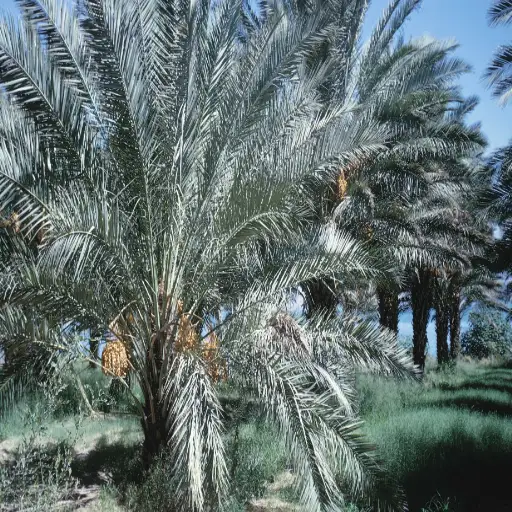Palm plants have always been a gorgeous panacea of beauty in gardens, both indoors and outdoors, with a lush and tropical affinity. Sometimes, the health problems in these are very stark to discern, while at other times, picking the exact nutrient imbalance may be far from straightforward. This is where Epsom salts, a simple and cheap agricultural remedy, come to one’s rescue. Because of their content of magnesium sulfate content, they have been credited by gardeners and horticulturists to spur growth, correct deficiencies, and enhance the health of palm plants. Keeping this in mind, this article attempts to focus on the advantages of using Epsom salts for palm plants and details the application techniques for ensuring their greatest benefit. Whether you’re an experienced gardener or new to plant care, this will certainly help you unleash the best use of palm plants through this extremely pliable application.
Benefits of Epsom Salt for Palm Trees
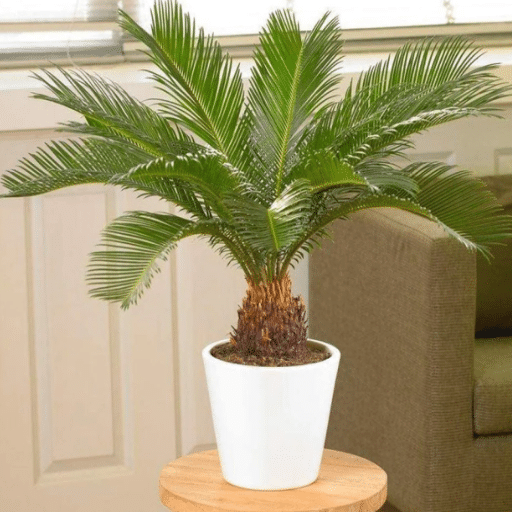
Enhancing Palm Health and Growth
Magnesium sulfate, commonly Epsom salt, is highly useful in curing and promoting palms suffering from a deficiency in magnesium. Magnesium is essential for photosynthesis because it is the central core of chlorophyll. When a palm is deficient in magnesium, certain symptoms such as yellowing of fronds or a general decline in vigor can be observed. Epsom salt application provides a highly absorbable magnesium form that allows the palm to maximize chlorophyll production and possess greener fronds.
Furthermore, the Epsom salt enhances the absorption and uptake of other important nutrients, including nitrogen and phosphorus. These two are critical in promoting strong development and withstanding environmental stress. Magnesium, together with the other two nutrients, forms a trio that works in assisting metabolism for stronger root and shoot systems of palm plants. Early remediation of any deficiencies is also key to circumventing any development and structural issues.
Application Methods:
Epsom salts may be amended to the soil or sprayed on plants for maximum effect. If in the soil, spread the Epsom salts from 2 to 3 pounds around the base of the palm for every 500 square feet of ground, depending on the size and health of the plant. Water thoroughly after application so the salts can be absorbed quickly. If using the foliar method, dissolve 2 tablespoons of Epsom salts in 1 gallon of water and spray directly on the fronds. Repeat every six weeks for the duration of the growing season. This ensures that palms stay lively, healthy, and nourished.
Promoting Greener Foliage
For greener and healthier foliage, it all comes down to nourishment, watering, and lighting conditions. Plants require a balanced fertilizer containing essential nutrients like nitrogen, phosphorus, and potassium to exhibit their magnificent coloration and liveliness. The presence of nitrogen is of utmost importance, for it encourages the production of chlorophyll; this pigment, of course, helps make leaves green. Please warrant a high-quality fertilizer based on the particular plant needs and foster its application as mentioned in recommendations, so as never to ruin that balance of nutrients by over-fertilizing.
Providing consistent watering at the right times comes next in a list of issues to consider. Most plants require soil that is moderately dry and evenly moist. Excess water leads to an oxygen deficit in plants, causing yellowish discoloration of their foliage; a lack of water induces dehydration and undernourishment. Check the degree of soil moisture required by your plant species so that you can water properly. Mulching helps keep the soil moist and cool, aiding in the growth of healthier leaves.
Exposure to sunlight is a very important factor that determines the vibrancy of foliage. Depending on a plant’s specific needs, it needs to receive the right intensity and duration of light. If it’s an extemporaneous plant, extra sunlight could burn its leaves, while a deficiency in sunlight would decrease chlorophyll production in its cells and dull the foliage colors. Hence, plants need to be placed in the garden or home setup strategically for ideal light exposure; where natural light falls short, use grow lights for indoor plants. By giving due diligence to these basic needs, one ensures that plants develop lush green foliage, which benefits health-wise and aesthetically.
Improving Magnesium and Sulfur Levels
The magnesium level in the soils can be amended with magnesium-rich fertilizers such as Epsom salt (magnesium sulfate) or dolomitic lime. Epsom salt can be slurried in water and spray-applied on plants through the leaves; the absorption is quicker this way, especially when visible are the signs of magnesium deficiency in plants-yellowing of leaves between the veins. Dolomitic lime also acts as a pH corrector, therefore more beneficial for acidic soils.
Sulfur level can be raised in the soil by applying elemental sulfur into the soil or sulfate fertilizers like ammonium sulfate or potassium sulfate. Sulfur is crucial for plants because it is involved in protein synthesis and amino acid formation. It is in elemental form when applied and, through microbial means, is converted over time into a plant-available form in soils that usually do not contain appreciable sulfur sources. Also, pH should be monitored alongside, as its application is likely to lower the pH in the soil.
In general, proper soil testing should be carried out whenever a deficiency of magnesium or sulfur is observed or suspected so that the proper amount of the mineral is applied. On the contrary, too high an application rate may cause some form of imbalance that may adversely affect plant growth. Therefore, take appropriate steps down the line and adhere to guidelines for mixing and application that arise from precise plant and soil needs. This will help maintain nutrient balance at a level conducive to strong and healthy plant growth.
Scientific Explanation of Epsom Salt
Chemical Composition of Epsom Salt
Epsom Salt, scientifically called Magnesium Sulfate Heptahydrate (MgSO₄·7H₂O), is a crystalline substance comprising magnesium, sulfur, and oxygen in close chemical association with seven molecules of water. In biological and chemical activities, magnesium ions (Mg²⁺) occupy a very critical position; for example, they facilitate photosynthesis in plants and the functions of enzymes in the soil. Sulfate (SO₄²⁻) provides the main source of sulfur, which is required in large quantities by plants for proteins and enzymes aiding chlorophyll production and the efficient absorption of nitrogen.
The Epsom salt structure is determined by its hydrated nature, with water molecules stabilizing the crystalline lattice and contributing to its solubility in water. Upon dissolution, magnesium and sulfate ions become bioavailable; hence, Epsom salt acts as an extremely accessible nutrient source in agricultural and horticultural applications. Studies have proved the temperature dependence of magnesium sulfate solubility, becoming soluble much faster in warm water. From a practical standpoint, this property has proved to be favorable, as it assures that nutrient uptake by plants is rapid in diverse field conditions.
Epsom salt was reputedly very good for crops, and uses could be extended far beyond mere nutrient application. It acts by softening soil due to compaction and increases the general CEC capacity of the soil to favor the movement of other ions of importance, such as calcium and potassium. Thus, by knowing the nature of the salt and how it interacts with soil and plants, fine-tuning of its use would be possible to harness much more power at the farm level to maximize the quality and value of crops.
Importance of Magnesium and Sulfur for Palms
Magnesium and sulfur are chief macronutrients directly responsible for the existence of healthy palms and affecting their growth. Magnesium plays an imperative role in physiological and metabolic processes within the palm. Magnesium also forms chlorophyll responsible for photosynthesis, in which palms use the light energy to synthesize their growth energy. Magnesium deficiency symptoms include interveinal chlorosis of the older fronds, which reduces their photosynthetic efficiency and eventually weakens the plant.
Sulfur is required for the synthesis of amino acids, proteins, coenzymes, and vitamins within the palm. It aids in the synthesis of energy-rich compounds and assists in nitrogen utilization for the good development of the plant. The usual expression of sulfur deficiency is the appearance of pale new growth or general chlorosis with reduced vigor, which adversely affects the aesthetic quality of palms.
The two nutrients are underscored by research that emphasizes synergistic importance in palm health. If you supply magnesium and sulfur as additional nutrients through suitable supplementary treatments, such as applying Epsom salts, then you correct the nutrients’ imbalance. Perform correct soil analyses and proceed with nutrient management appropriate to securing the best performance of palms, particularly where nutrient deficiencies and the sandy nature of the soils favor leaching.
How Epsom Salt Works at a Cellular Level
Epsom salt is a magnesium compound that plays vital roles in many physiological and biochemical processes in plants. Magnesium, being essentially a center atom in the chlorophyll molecule, is found in the chloroplast of the cell and carries out photosynthesis. These processes lead to glucose synthesis and energy storage, which are essential for growth and vigor. Magnesium also acts as a cofactor for diverse enzyme systems and catalyzes many metabolic reactions, such as the activation of ATP, which is a molecule that stores and transfers energy within the cells.
Sulfur, the other vital component of Epsom salt, constitutes a major factor in protein synthesis as it is an amino acid-building element, such as methionine and cysteine. It also synthesizes vitamins and enzymes that maintain the structural integrity of the proteins themselves and make metabolism within the plant more efficient. Both magnesium and sulfur are mobile within the plant, which means these elements can go to areas of the plant in need of them, such as growing tissues.
Studies confirm that soil pH and moisture levels largely control soil magnesium and sulfur uptake. Mainly, sandy and acidic soils are leached of these nutrients and would require regular applications of magnesium sulfate for replenishment. Applying Epsom salt at certain controlled levels makes sure growers get the nutrients absorbed at the root-soil interface, thereby avoiding nutrient antagonism or deficiency. Precision in soil and cellular management is now the crux of Epsom salt’s application as a corrective and preventive measure in modern-day agriculture.
Proper Application Techniques
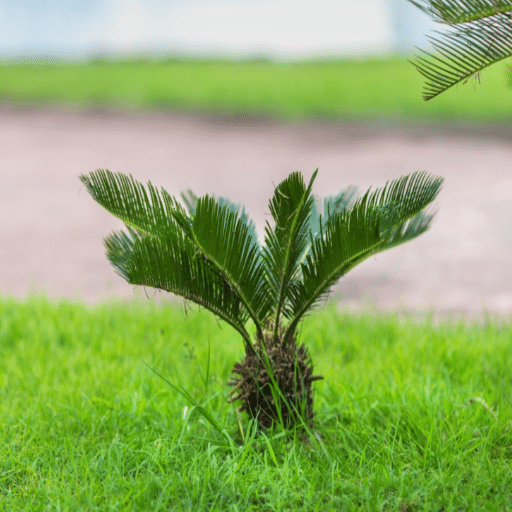
Right Dosage and Frequency
The application of Epsom salt hinges very much on soil-testing results and the crop type and growth stage. Epsom salts may generally be applied for maintenance at approximately 10-20 pounds per acre, but changes depending on crop requirements. For instance, crops such as tomatoes, peppers, and roses may benefit from foliar application targeted specifically at 1-2 tablespoons of Epsom salt dissolved per gallon of water. Over-application, however, should be avoided as excess magnesium can unbalance calcium and potassium, leading to antagonism in nutrients and thus further lowering overall crop yield.
Timing has another significant contribution when it becomes more critical for the maximization of Epsom salt in agriculture. Basal applications will always be strongly recommended in the early planting stage when the establishment of root systems is going on and nutrient uptake pathways are in the setting phase. Foliar sprays, on the other hand, have their maximum efficiency through the flower and fruit periods so nutrients can be delivered immediately, hence supporting the energy-requiring process. In magnesium-deficient soils, split applications applied with time throughout the growing season have been shown to tremendously increase the recovery of nutrients in the rhizosphere.
In order to ensure precision, contemporary agricultural practice includes soil and tissue analysis data with advanced application recommendations for magnesium sulfate. Variable rate applications refer to farmers dynamically adjusting dosages according to soil variability to avoid both deficiency and excess. With these advanced methodologies, plus recommended application intervals as governed by crop physiology, nutrient efficiency is enhanced toward the final goal of sustainable agricultural productivity.
Methods of Application: Mixing and Direct Soil Application
An exact application method of magnesium sulfate is essential to ensure maximum nutrient absorption and the best crop production. Magnesium sulfate can be mixed into water or liquid fertilizers before application, so it will be spread evenly. This is particularly suitable for fertigation systems because here magnesium and sulfur are brought by irrigation water right into the root zone. If done in correct proportions, it prevents nutrient loss through leaching or runoff, conserving resources and supporting the plant in reaching its maximum growth potential.
Magnesium sulfate applied via the soil alone may be broadcast or banded onto the field. Broadcasting is mostly done pre-planting as a soil amendment so that nutrients are distributed evenly along the soil surface before the cultivation process is supposed to mix them into the root zone. On the other hand, banding is rather an advanced method with the magnesium sulfate being applied in concentrated bands near crop rows or seeds. Localized delivery ensures nutrients are present in higher concentrations where they are most needed, thus enhancing nutrient uptake efficiency.
Further advancement in these technologies of soil analysis or monitoring, along with the availability of spraying equipment capable of variable rate application, has only made these methods a little more precise. A farmer can apply the full suite of precision agriculture techniques to evaluate which soil lacks magnesium and apply magnesium sulfate only to those areas. This improves upon excessive application in areas already rich in nutrients, thereby reducing wastage and runoff of materials into aqueous environments as an environmental hazard. Mixing and straightforward soil application combined with correct data-driven practice constitute the core of sustainable and efficient nutrient management in current agriculture.
Best Practices to Avoid Overuse
For circumventing such conceivable dangers of over-reliance on agricultural inputs such as fertilizers, necessary soil amendments, etc., a fusion of precision techniques and data-based approaches must be implemented. The practice of soil testing and analysis needs to be undertaken regularly to glean holistic information on currently available nutrients, pH, and any existing deficiencies in the soil. From this data, the farmers can specify the exact rate for application, hence avoiding either overstressing it or underapplying it.
Moreover, the very use of technologies such as GPS-guided machinery and variable-rate application equipment can ensure that inputs end up in the exact location intended for them. They may also utilize crop modeling software and remote sensing tools that would analyze field-specific characteristics combined with historical trends to anticipate nutrient uptake requirements under general conditions.
INM also involves the recycling of organic matter, residues, and wastes such as compost, farm yard manure, or green manures along with chemical fertilizers to sustain the fertility of the soil in the long term, besides minimizing dependency on synthetic inputs. It is also equally important to look for weather forecasts in scheduling nutrient applications, as fertilizer applied ahead of heavy rainfall fortifies runoff and leaching processes, permitting environmental damage and wastefulness of the resource.
By using modern agricultural techniques and keeping abreast with recent research, a farmer can formulate a comprehensive and efficient approach to nutrient management that safeguards sustainability and economic viability along the western environmental health.
Potential Risks of Using Epsom Salt
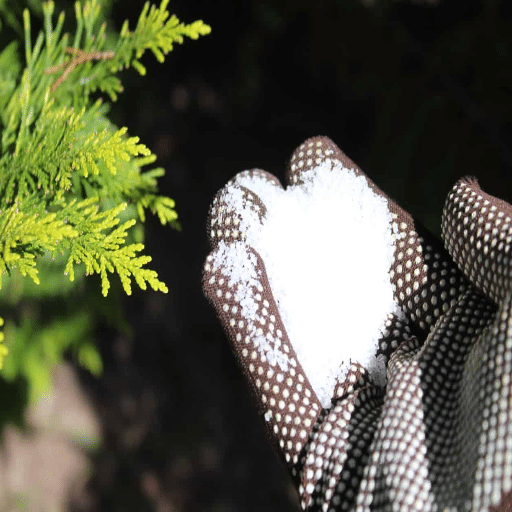
Nutrient Imbalances in Soil
Improper addition of Epsom, the principal component being magnesium sulfate-to soil systems may cause an imbalance in nutrient composition. Too much magnesium, for example, may compete with the uptake of essential nutrients such as calcium and potassium. This, in general, happens when the amount of magnesium present goes far beyond what the soil requires, hence changing the existing cation exchange capacity and destroying the equilibrium necessary for the plants’ best growth and nutrient uptake. Slowly but surely, that imbalance will translate to the reduced earnings of farmers and varying soil degradation.
Epsom salt use is approached with due caution from the perspective of environmental protection and proper soil management. Also, testing of the soil should precede any such applications since it provides useful information about nutrient composition and deficiencies that may currently exist. Based on this analysis, the farmer can decide whether indeed there is a need to replenish magnesium using Epsom salt. Having no data might well end up worsening nutrient problems instead of resolving them.
Along with that, I remain aware of potentially broader ecological consequences of nutrient imbalances. There can be said to be an adverse effect on any given environment in terms of groundwater quality through leaching or on ecosystems in and around the targeted site. To forestall that, I use fertilizer plans designed for a particular situation and feel free to look to agronomy research for guidance to make mature decisions that sustain productivity as well as environmental health.
Soil Buildup and Its Consequences
The nutrient accumulation in the soil arises primarily from the continuous application of fertilizers, organic amendments, or other inputs without due monitoring and management. Such accumulation disturbs the normal balance of essential nutrients like nitrogen, phosphorus, or potassium, consequently creating growth conditions-whether detrimental or promoting excessive vegetative growth at the expense of yield quality. For instance, plenty of phosphorus might impede the uptake of micronutrients like iron and zinc, which are important for plant growth. Understanding these interactions is imperative to preserve long-term soil productivity, of course, without compromising its physical condition or environmental health.
The immediate concern arising from a possible untreated accumulation of soil nutrients is environmental contamination. Residues of nutrients, nitrates, and phosphates in particular can migrate from an agricultural field into types of nearby water bodies. This eutrophication procedure triggers an algal bloom that depletes dissolved oxygen in the aquatic systems, endangering aquatic life, created by fish and other organisms. Moreover, nitrate nitrogen can leach into groundwater, giving rise to concerns over water quality and human health because nitrates are associated with conditions like methemoglobinemia, popularly known as the blue baby syndrome. Methods to address this include soil testing, which can identify and help solve the problem before it jeopardizes a larger ecological scenario.
Another major concern emanating from soil buildup is that it affects soil health and structure. Long-term application of salts through certain fertilizers may bring in salinity into the soil, which would reduce permeability in some way and the infiltration capacity of water into the soil. This condition stunts the growth of roots and diminishes the productivity of crops. Higher imbalances of nutrients again promote soil acidification, which leads to less microbial activity and the availability of other important nutrients. To remediate this, consideration should be given to the integration of crop rotation, precision agriculture, and site-specific nutrient management plans. These strategies will make certain that inputs are delivered based on real needs in the soil and hence will prevent over-nutrient loading while the systems sustain themselves.
Signs of Overapplication
Overapplication of fertilizers and nutrients can manifest in many forms, both in neighboring environments and in the crops themselves. One of the clean-cut field indicators is the nutrient runoff, which can be observed through algal blooms in adjacent water bodies. The leaching of excess nitrogen and phosphorus from fertilizers into streams, rivers, or lakes causes eutrophication. Behind the grim water scenarios is the fading health of soils. Salt accumulates excessively, deepening land salinization, which decreases water uptake by plants and could nearly restrict growth. Overapplication also precipitates imbalances in pH, another evaporative cause for hiding away some micronutrients and silencing microbes in potential diversity.
There are also peculiar problems that develop in crops if nutrients are supplied in excess. Plants may develop too fast, and these weak plants cannot stand up to environmental stress factors such as wind or drought. For instance, an excessive quantity of nitrogen sometimes favors luxuriant vegetative growth at the cost of fruit or grain production. Hence, there is not only a decrease in the yield but also the quality of the crops is affected adversely. Such visual symptoms could also warn of nutrient toxicity affecting the plant system: burning of leaves, chlorosis, or necrosis.
Economic and ecological consequences of overapplication form important reasons for its mitigation. From an economic standpoint, wastes are created with too much input cost while intensifying the inefficiencies in farming. Conversely, environmentally, excess nutrients contribute heavily to greenhouse gases, principally nitrous oxide, which is formed in considerable quantities from nitrogen fertilizers. Such issues, therefore, necessitate comprehensive soil testing and sound decision-making, particularly in precision agriculture. Treatment at the right time and with the right application of sustainable management will guarantee that nutrient application fulfills a balance between farm productivity and environmental stewardship.
Palm Care Trends 2025: As Climate Change Impacts
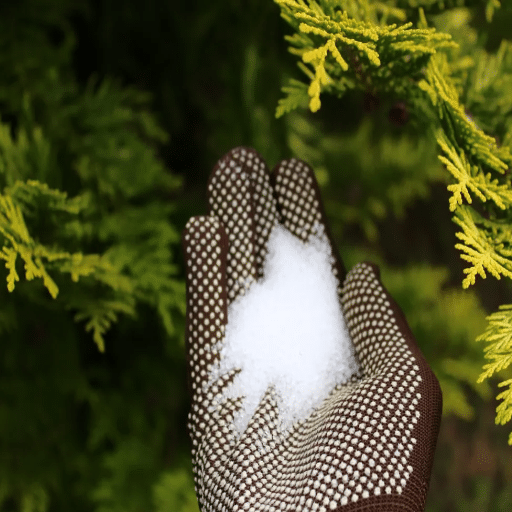
Adapting Epsom Salt Use Amid Changing Climate Conditions
Epsom salt or magnesium sulfate (MgSO₄) has been the long-time overhaul remedy for plant health, especially for fertilizer demanding increased levels of S and Mg. Due to improved chlorophyll production and absorption of nutrients, this effect of Epsom salt becomes more pronounced in the face of climate change. Contrasting weather patterns, with sometimes long droughts or very inconsistent showers, directly influence nutrient dynamics in soils, often resulting in nutrient leaching on a large scale and huge nutrient deficiencies.
Research suggests that there is a higher incidence of magnesium deficiency in areas subjected to heavy rainfall or irrigation, thus leaching the soil of essential minerals. Concurrently, increased temperatures increase the nutrient demands of plants, putting pressure on the agricultural system in place. The application of Epsom salt can counteract this by supplying magnesium and sulfur during critical growth stages, such as flowering and fruiting.
Through employing precision spraying, different Epsom salt treatments can be directed accurately towards the deficiency, thus preventing wastage and providing environmentally sustainable solutions. It is learned and emphasized by researchers, in contrast to conventional soil testing, that Epsom salt with high-technology soil-monitoring systems works better and is more efficient with less wastage in the application. Accordingly, agronomy combined with traditional knowledge must develop mechanisms for Epsom salt application while moving with the modern challenges of climate-resilient agriculture.
Future Insights on Palm Health and Nutrition
With regard to palm health and nutrition, the attempt to optimize productivity and sustainability using new technologies and nutrient management strategies is under consideration. There has been an advancement in remote sensing technologies, such as multispectral and hyperspectral imaging, which have now provided the possibility of observing palm plantations on a real-time basis. These tools observe plant health with much precision, detecting nutrient deficiency at its early stages; issues pertaining to stress factors or even early stages of pest infestation are also highlighted. This allows for an early intervention.
Apart from these, it is very pertinent to the formulation of biofortified fertilizer and nutrient mixture tailored to the particular requirements of palm species and soil profiles to elicit better efficacy in achieving yield potential and minimizing impact on the environment. Microbial soil amendments are receiving considerable attention since they boost nutrient uptake efficiency while also supporting root health via beneficial microbial interactions.
Further integration of AI and machine-learning models shall mark yet another turning point in decision-making for palm agriculture. Predictive analyses involving the interrogation of historical and real-time data could be harnessed to forecast nutrient demand, establishments for fertilization, and reductions in wastage of resources. It maintains a scientific approach that increases yield and is an aligning force with sustainable agriculture targets worldwide, confronted by challenges in climate scenarios.
Emerging global trends point toward increasing emphasis on climate adaptation strategies for palms, paying particular interest to the resilience of plantation systems to highly unfriendly weather patterns. The introduction of drought-tolerant palm varieties and adaptive irrigation techniques would be at the heart of sustenance production under future climatic variance. By designing these advances, the sector can steadily fulfill the global demand for palm-based products while integrating ecological balance on a long-term basis.
Emerging Trends in Fertilization Techniques for Palm Trees
Precision agriculture and sustainable land management are rapidly becoming the focus of modern methods used to fertilize palm trees. One key tool drawn up alongside this trend is site-specific soil analysis to enhance nutrient application practices. By finding out the actual deficiencies and pH level of the soil, the grower can avoid an unnecessary excess of fertilizer being applied and which could foster a leaching problem into the environment.
Another interesting development involves fertilizers whose nutrients are supplied continuously and in controlled doses for longer periods. By so doing, this increases the efficiency of nutrient absorption and simultaneously reduces how of fertilizer applications necessary, which then translates to less labour costs. Furthermore, the growing use of bio-fertilizers containing beneficial microbes provides an alternative that improves soil health by fixing nitrogen and solubilizing phosphates; processes that are essential for palm tree development.
Moreover, foliar fertilization finds an important use, especially in the correction of micronutrient deficiencies. Foliar sprays ensure rapid absorption of nutrients in the plant, and they are especially useful to address short-term deficiencies of magnesium, zinc, and boron in particular, the three of which are crucial for optimum development of fruits and leaves.
In addition, technological advances enable drone dispersal of fertilizers and the use of remote sensing tools, which allow for better fertilization management in large plantations. These technologies contribute to accurate application under large-scale operations while maintaining sustainability. Therefore, these modern practices highlight the shift to more environmentally friendly and less expensive fertilization methods with a view toward keeping palm plantations productive in an environmentally friendly way.
Frequently Asked Questions (FAQ)
Q: How does Epsom salt treat palm plants?
A: Palm plants treated with Epsom salts get the benefit of magnesium sulfate, which is an essential nutrient for the growth of the plant. Epsom salt keeps palm plants growing by alleviating magnesium deficiency in palms, which brings about yellowing of older leaves and burning of newer leaves.
Q: How frequently should Epsom salt be applied to the palm plant?
A: It is advised to apply Epsom salt twice or thrice a year. For best results, mix 1 teaspoon of Epsom salt in one gallon of water and use this mixture to water your palms during the active growth period.
Q: Will Epsom salt correct potassium deficiency in palms?
A: Besides not being able to contribute potassium, Epsom salt mainly provides magnesium for your palms. In turn, maintaining a balanced palm fertilizer with potassium, along with Epsom salts, can help keep your palms well-nourished with all the nutrients they require.
Q: What are some signs of magnesium deficiency in palm trees?
A: Older leaves in palms turn yellow, especially along the margins, with stunted growth marking a manifestation of magnesium insufficiency. If symptoms like this are noted, magnesium addition through the usage of Epsom salt might revive the palms.
Q: How much Epsom salt should I use for my palm trees?
A: A good rule of thumb is about 2 pounds for bigger palm trees, while container palms may require as little as 1 teaspoon of water. Always adjust according to the size of your plants and the needs they display.
Q: Can I use Epsom salt with another fertilizer?
A: Yes! When used with a slow-release palm fertilizer, Epsom salt can increase the availability of nutrients. Just be careful with how much fertilizer salts you throw in, since too much can cause high pH and drainage problems.
Q: Is there a best time to apply Epsom salt to the palms during the year?
A: Typically, it would be during their growing season, every couple of months in warmer months when palms are most active, so that their magnesium requirements for healthy growth are satisfied.
Q: Is there any risk from the possible excessive application of Epsom salt in gardening?
A: Indeed, if you add excessive amounts of Epsom salt, it can lead to an imbalance in soil nutrients, which could create other problems, such as a rise in soil pH or poor drainage. Always stick to the recommended amount to keep your palm trees happy and thriving.
Q: Would this work on any palm plants?
A: Epsom salt is generally safe for most types of palms, which include areca palms and some other hardy types in the U.S. Department of Agriculture plant hardiness zones. Still, keep an eye on one particular palm’s response so that you don’t create a deficiency in magnesium or any other element.
Application Guidelines Summary
| Application Method | Dosage | Frequency | Best Time |
|---|---|---|---|
| Soil Application | 2-3 pounds per 500 sq ft 2 pounds for large palms |
2-3 times per year | Early growing season |
| Foliar Spray | 2 tablespoons per gallon of water | Every 6 weeks | During the growing season |
| Container Palms | 1 teaspoon per gallon of water | Monthly during active growth | Spring through fall |
References
- Clemson University Cooperative Extension: Palm Diseases & Nutritional Problems – Provides guidelines on applying Epsom salts for palm tree care.
- Washington State University Libraries: Epsom Salt Use in Home Gardens and Landscapes – Explains the physiological and biochemical benefits of Epsom salt application.
- University of Georgia Extension: Sago Palms – Pros, Cons, & Care – Highlights the role of magnesium in palm care and clarifies common misconceptions.
Key Takeaway
Epsom salt serves as an effective supplement for palm plant health when used correctly. Always conduct soil testing before application, follow recommended dosages, and monitor your plants for signs of improvement or adverse effects. With proper application, Epsom salt can significantly enhance the vigor and beauty of your palm plants while supporting sustainable gardening practices.



